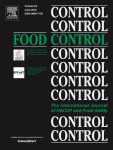Ver ítem
- xmlui.general.dspace_homeCentros Regionales y EEAsCentro Regional Santa FeEEA RafaelaArtículos científicosxmlui.ArtifactBrowser.ItemViewer.trail
- Inicio
- Centros Regionales y EEAs
- Centro Regional Santa Fe
- EEA Rafaela
- Artículos científicos
- Ver ítem
Risk factors associated with the presence of aflatoxin M1 in raw bulk milk from Argentina
Resumen
The objectives of this study were to assess aflatoxin M1 (AFM1) contamination in bulk tank milk, and to further identify the risk factors associated with the presence of AFM1 in raw milk in Argentina. The presence of AFM1 was investigated in 160 bulk tank milk samples collected from farms located in the most important milk production region in Argentina during one year (four seasons). Samples were analysed using immunoaffinity column (IAC) cleanup and
[ver mas...]
The objectives of this study were to assess aflatoxin M1 (AFM1) contamination in bulk tank milk, and to further identify the risk factors associated with the presence of AFM1 in raw milk in Argentina. The presence of AFM1 was investigated in 160 bulk tank milk samples collected from farms located in the most important milk production region in Argentina during one year (four seasons). Samples were analysed using immunoaffinity column (IAC) cleanup and UHPLC-MS/MS method for determining AFM1 at low levels of concentrations (LOQ = 0.003 μg L−1). A survey about the potential factors associated with the presence of AFM1 in milk was performed directly in the field through a questionnaire applied to the farmers. Chi-square and logistic regression were performed with presence of AFM1 in milk as dependent variable, and potential risk factors as independent variables. Incidence of AFM1 in raw milk was 38.8% and, in all samples, AFM1 levels were lower than the Southern Common Market (MERCOSUR) Regulation (maximum level accepted = 0.5 μg L−1). Commercial feed consumption (OR = 4.630, P = 0.001), soybean expeller consumption (>0.95 kgDM/cow) (OR = 3.542, P = 0.019), and cotton seed consumption (>1.5 kgDM/cow) (OR = 2.949, P = 0.089) were associated with the incidence of AFM1 in raw milk. Despite the incidence and the level of AFM1 in milk produced and commercialized in Argentina is not a serious problem for public health. The farm breeding intensification and the supplementation with commercial feed, soybean expeller, and cotton seed seems to be the risk factors that impacts on the AFM1 milk contamination. Therefore, Argentina should improve its monitoring program on mycotoxins in animal feed and milk and improve the management practices in farms.
[Cerrar]

Autor
Michlig, Nicolás;
Signorini, Marcelo;
Gaggiotti, Monica Del Carmen;
Chiericatti, Carolina;
Basílico, Juan Carlos;
Repetti, María Rosa;
Beldoménico, Horacio Ramón;
Fuente
Food control 64 : 151-156. (June 2016)
Fecha
2016-06
ISSN
0956-7135
Formato
pdf
Tipo de documento
artículo
Palabras Claves
Derechos de acceso
Restringido
 Excepto donde se diga explicitamente, este item se publica bajo la siguiente descripción: Creative Commons Attribution-NonCommercial-ShareAlike 2.5 Unported (CC BY-NC-SA 2.5)
Excepto donde se diga explicitamente, este item se publica bajo la siguiente descripción: Creative Commons Attribution-NonCommercial-ShareAlike 2.5 Unported (CC BY-NC-SA 2.5)

